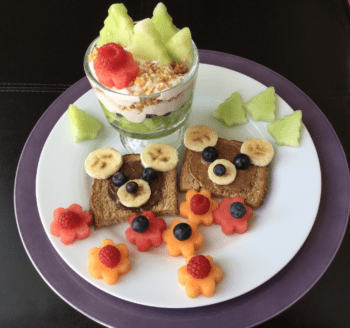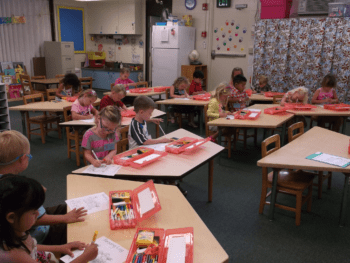Diabetes in kindergarten
Like any mom, I naturally worry about whether my child is healthy. A disease that occurs more and more frequently not only in adults but also in children is diabetes mellitus.
During my pregnancy, I too had a Gestational diabetes – more here.
©Navy Hale Keiki by flickr.com
There are two types of diabetes mellitus: type 1 diabetes and type 2 diabetes, which can be distinguished from each other based on the causes alone.
The causes of type 2 diabetes lie in the hereditary disposition and mostly in an incorrect diet, while type 1 diabetes is a non-curable autoimmune disease.
What exactly is responsible for the development of diabetes is unknown to this day.
For children with type 1 diabetes, the very normal Visit to the kindergarten not only possible, but even important.
In order not to feel excluded by the disease, the little ones should learn to deal with their diabetes openly and responsibly right from the start.
In doing so, they should be reliably supported by us parents as well as by educators.
If the child has diabetes in the kindergarten period
⦁ As a rule, the child should only eat the food brought in at specified times consume and also eat them completely.
If, nevertheless, once nibbles, z.B. to a birthday, on the table come, should give the educators simply briefly, so that one does not wonder in the evening about high blood sugar values.
Ultimately, we as parents are responsible for the choice of food and should adapt the meals to the daily routine in kindergarten.
⦁ It is important to inform all kindergarten teachers about symptoms and necessary measures in case of a Hypoglycemia to inform. A portion of glucose and a little rest usually helps.
However, if the child slips into a strong hypoglycemia (hypoglycemia) the emergency doctor must be called immediately. For safety reasons, it is therefore essential to educate about the main influences on blood sugar – these include physical activities that lower blood sugar levels and carbohydrates that raise blood sugar levels.
⦁ Not only all educators must be informed (My tip: compile information material and clear checklists), including the Playmates of the child should understand why special rules are to be observed.
If you explain to your child’s friends in an understandable and playful way what diabetes actually is, you can count on their tolerance and compassion.
(Source: Working Group for Pediatric Diabetology)

©Ritas Safo by flickr.com
Eating in kindergarten: are there foods that have a low impact on blood glucose levels?
There are some foods that cause the blood sugar to rise only slightly – I already dealt with this myself during my pregnancy.
Such foods can be eaten by children with diabetes in between meals without severe fluctuations in blood glucose to expect.
These include raw vegetables (z.B. carrots, kohlrabi and peppers), sugar-free candies and delicious unsweetened fruit teas.
It is recommended to put together healthy snacksA combination of wholesome bread, vitamin-rich fruit, crunchy vegetable strips and some natural yogurt is particularly suitable.
Sports in kindergarten: What to watch out for in children with diabetes?
It’s important to me that my child gets plenty of exercise and runs around – because that’s what being a child is all about. But what to watch out for as a parent if your child has diabetes?
Generally may resp. children with diabetes should participate in all activities, as Exercise in everyday life already in childhood has healthy effects.
It should be noted, however, that exercise lowers blood sugar levels. That’s why, as parents, we can simply give our charge a small supply of carbohydrate-rich foods to eat.
For example, dextrose, muesli bars, cookies or fruit juices can be used for this purpose. This supply should be available for spontaneous sporting activities and can be kept in a can, for example, and labeled “eat before sport”.


